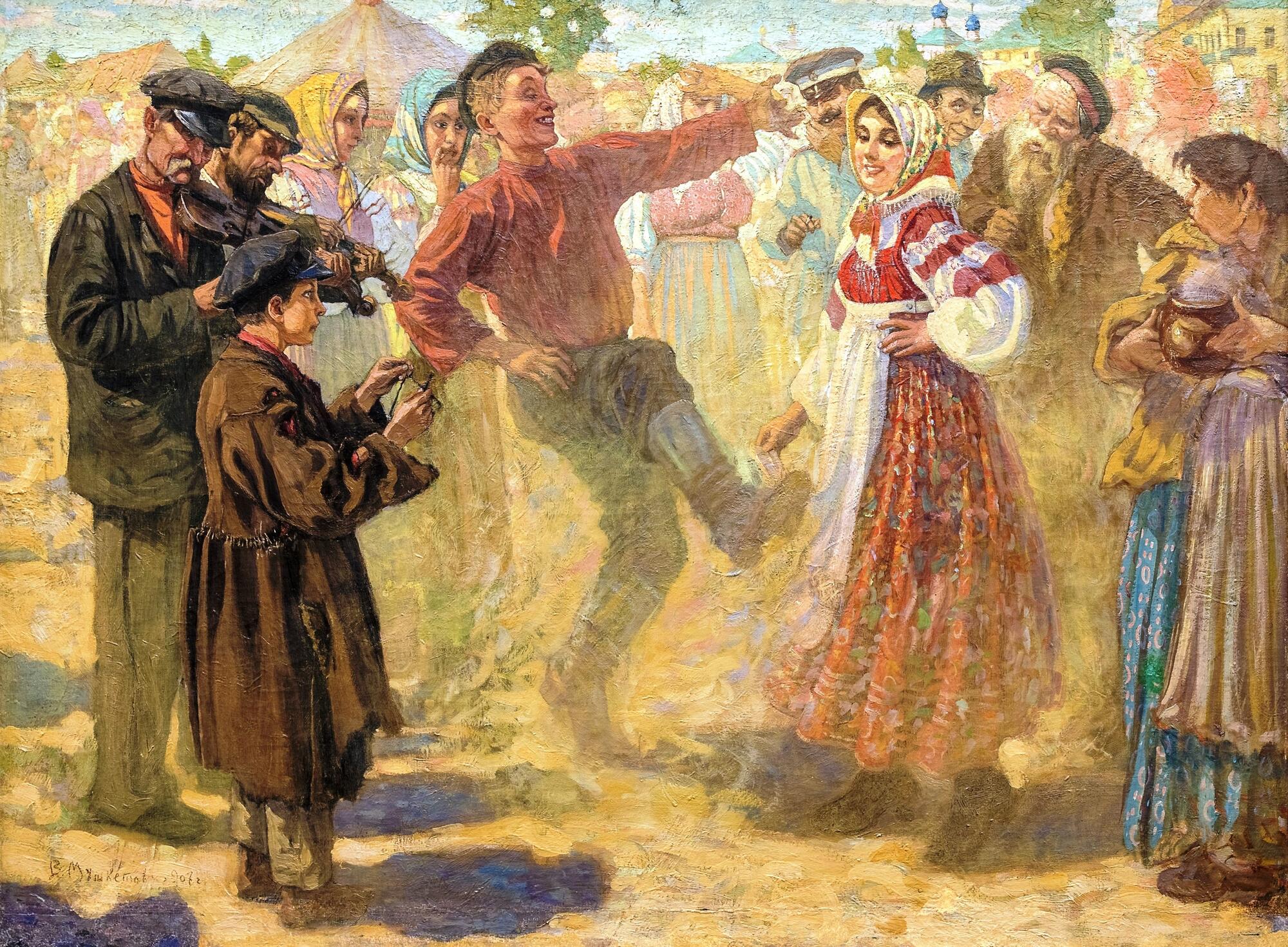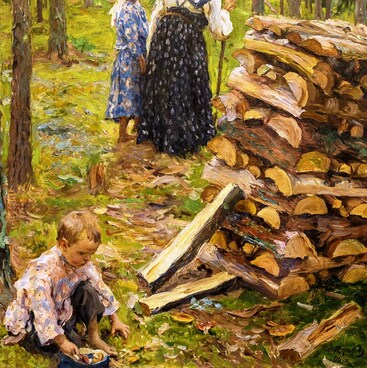Vitaly Ilyich Mushketov was a teacher and painter of genre compositions and landscapes. In 1902, he graduated from the Moscow School of Painting, Sculpture and Architecture. In 1903, he entered the Imperial Academy of Arts in Saint Petersburg. In 1907, he received the title of painter. From then on, he taught in Smolensk. From 1904, Mushketov participated in exhibitions at the Imperial Academy of Arts. From 1912, he regularly exhibited his works in Smolensk. The painter also worked in the Smolensk Art Gallery.
In his painting “Festivities in the Province”, Vitaly Mushketov explores the theme of traditional festivities and fairs. In the second half of the 19th century, scenes of common people living their lives became quite popular, thanks to the Peredvizhniki art movement. Back then, genre painting was very diverse and formed an important part of Russian art. While the early Peredvizhniki artists devoted their paintings to the hard work and miserable living conditions of common people, their followers, Peredvizhniki artists in the late 19th — early 20th centuries, on the contrary, reflected the brighter side.
Mushketov depicted festivities at a fair in a Russian provincial town. Characters, each of them accurately represented, are gathered around a dancing young couple — an artisan and a peasant girl.
They are watched by many people: men, women, an old Cossack and a gorodovoy (“city policeman”). In the painting, the policeman is part of the crowd, watching the dancing couple, with some pickpocketing unfolding right behind his back.
With obvious and sincere affection, Mushketov depicted a group of traveling musicians playing at the fair: two slumped violinists, playing a well-learned tune, and a teenage boy with a triangle.
The artist is very meticulous at not only reflecting the characters’ personalities, expressively captured in their faces and postures, but also depicting the details of their clothes.
The painting highlights the artist’s penchant for multiple-figure compositions and his aim to reveal and emphasize the social aspect of the narrative, which allows him to outline the national and ethnic peculiarities of everyday life of peasants and townspeople, show the setting and present many types and characters.


